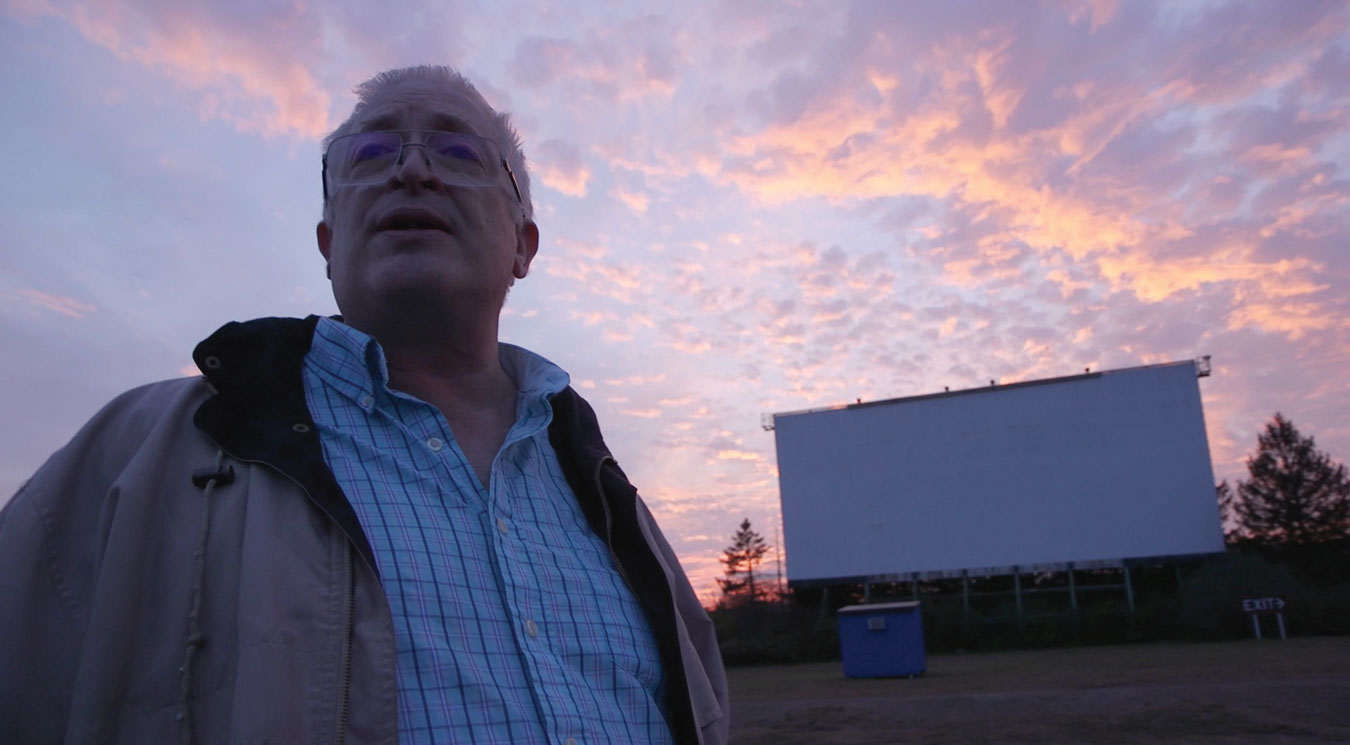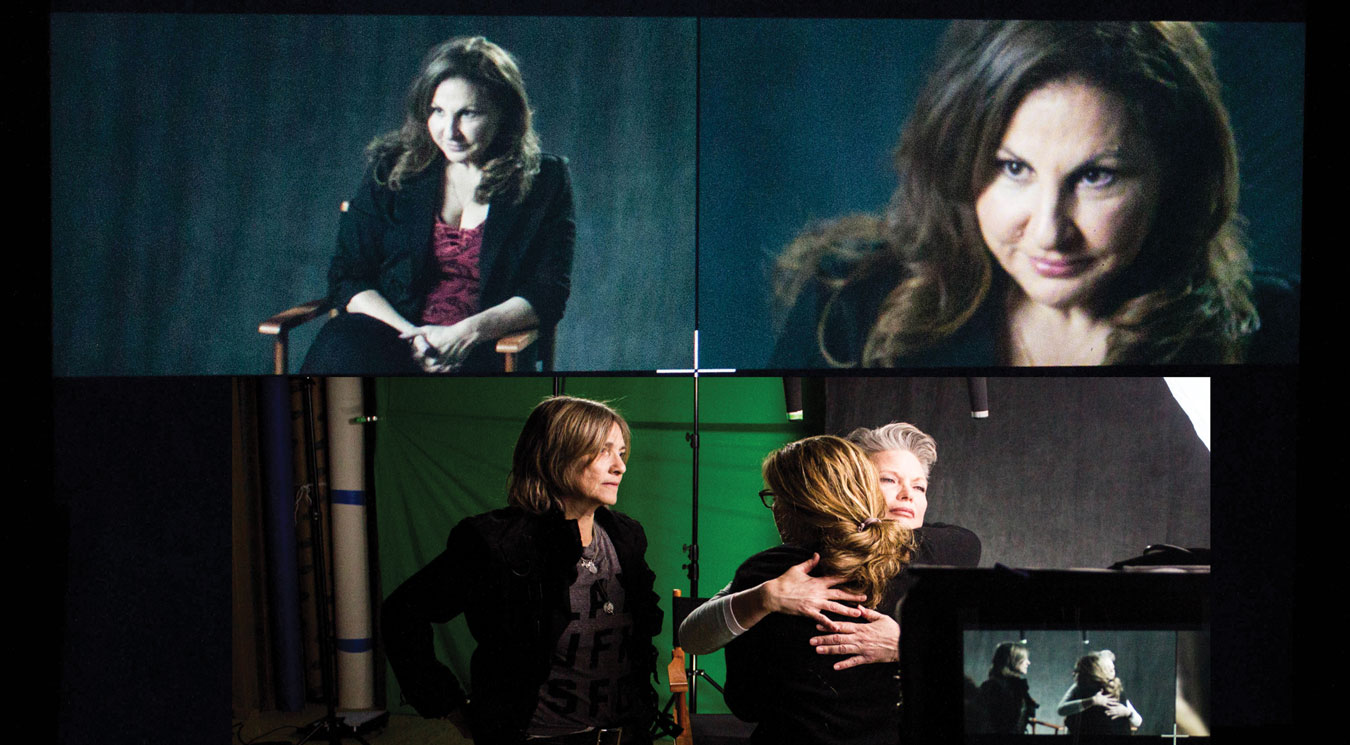Doc Corner: Dances with Films Festival
 Tuesday, June 5, 2018 at 2:00PM
Tuesday, June 5, 2018 at 2:00PM by Glenn Dunks

The spectre of films past linger over two documentaries at the Dances with Films independent film festival (June 7th-17th at the TCL Chinese Theaters in Los Angeles). Their ability to bring an audience back to something more innocent is perhaps one of the strongest elements of this festival that prizes the atmosphere of a summer camp rather than a crazed film festival in the snowy mountains or on the sunny beaches.
The more obvious of the two that I was able to sample is Alexander Monelli's At the Drive-In, a film that you could glimpse at a pass and suspect you have already seen a dozen times at other festivals. Film festival audiences are, after all, more naturally disposed to watch a documentary about a venue like a drive-in or a classic movie palace or a dying/dead/forgotten part of the filmgoing experience. The inherent nostalgia and cinematic reverence of these topics make them solid programming on any festival’s behalf...
But while it would be simple (and cynical) to look at this new documentary about a year in the life of the Mahoning Drive-In in Lehighton, Pennsylvania, and assume it is just that, there’s actually more to it. At the Drive-In's quiet elegance is enhanced by a filmmaker who thankfully doesn’t dip too far into romanticism for the sake of reality. While there are a lot of things that audiences will love here – those with a penchant for discussions about celluloid versus digital and who thrill at the energy created by the flicker of a cinema screen will leave them with a warm and fuzzy feeling – it is what Monelli is able to do with the theme of community that ultimately allows this documentary to go from polite entertainment to something somewhat more substantial.
Anybody who saw Florian Habicht’s wonderful horror theme park doc from 2017 called Spookers may spot the similarities in At the Drive-In. That film, while gleefully relishing the gruesome wicked shenanigans of chainsaw-wielding clowns and blood-feasting zombies, worked predominantly for the way it spotlighted the way the park became a home away from home for its cast of misfits and outsiders, weaving storylines about abuse, HIV and anguish through its more standard doc profile of a noteworthy institution. It’s a great film and I recommend you catch it if you can.
Likewise, At the Drive-In captures the Mahoning Drive-In’s cast of oddball circle of friends with a warmth that impressed me, especially when it could have been so easy to treat them as comedy. It's this reverence that helps up understand why they keep plugging away at an endeavour that feels fruitless. At one point one of Monelli’s subjects says how smart it was for him to make a documentary about this place by itself rather than his original plan of a broader strokes documentary about drive-in picture theatres. And it is smart. What’s also smart is how, perhaps accidentally, he frames the film beginning with two individuals happening upon the drive-in by accident and making it their home much like the director himself.
For Jill Salvino’s Between the Shades, it isn’t moviegoing in general that lingers but rather one film in particular. This simply assembled doc is something of a spiritual sequel to 1977’s Word is Out by Nancy Adair, Andrew Brown and Rob Epstein. Made up of little more than to-camera interviews, predominantly done plainly in front of a grey backdrop, Between the Shades seeks to be a sort of compendium on the many moving parts of the current LGBTQI movement. Like that earlier film that, in a world before AIDS, sought to simply (as the poster tells it) tell “stories of our lives”, so to does Between the Shades.

40 years later, of course, a lot has changed and the film ultimately succeeds about as much as it fumbles. It is great to see transgender people and intersex people telling their stories themselves alongside gay people, bisexual people, and those who – when forced, of course; one of its most common refrains is “I don’t believe in labels” after all – fit somewhere else on the spectrum. They along with more recognizable names like Beth Malone, Kathy Najimy, Madonna Cacciatore, Vincent Ford and Andrew Tobias discuss identity and labels, coming out, activism, relationships and much more.
Another film I thought about when watching Between the Shades was The Case Against 8, the flatly made documentary about proposition eight and the very white, heteronormative way many in the gay rights movement felt they needed to project. That sense of (and this is my word here) respectability bubbles up too often in Shades, the film making much too much of an effort to highlight how ordinary many gay people are. For all of its conversation topics, it never ventures past strictly G-rated territory to navigate the sexual lives of these people. This only seeks to highlight an almost haves-and-haves-not approach to the interview subjects between predominantly white and cisgender individuals in loving, monogamous couples, and then everyone else who are missing something.
Furthermore, there is a distinct lack of people of Asian or South Asian descent, and seemingly no representation of anybody from a non-protestant religious background. There is so much interesting stuff in Between the Shades, and I am happy I saw it and that it is filmed for prosperity. However, in attempting to show the world what the L, G, B, T, Q and I is all about, Salvino’s film misses too much.
 Doc Corner,
Doc Corner,  LGBT,
LGBT,  documentaries,
documentaries,  drive-ins,
drive-ins,  film festivals,
film festivals,  moviegoing
moviegoing 


Reader Comments (1)
i would totally watch this drive-in movie. I love the mythology around drive-ins which is weird because I spent so little time in them and I tended to not love going to them even when I did.